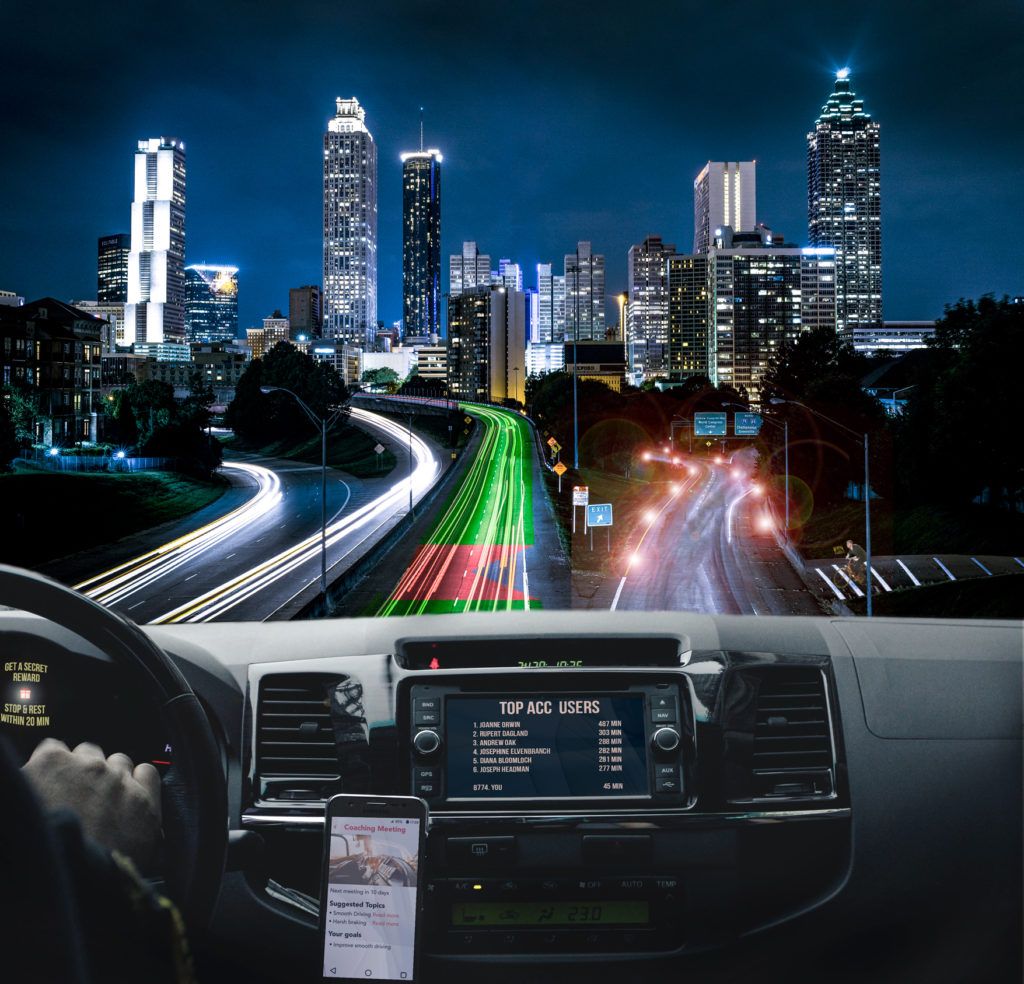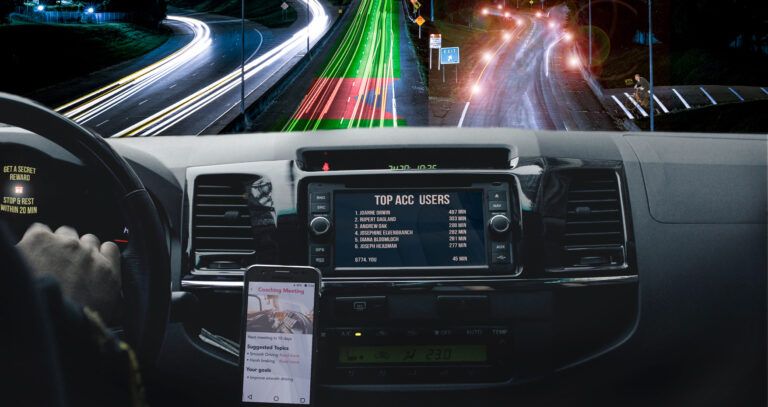The EU’s €7.1 million road-safety project MeBeSafe has announced the results of its three-and-half year study into developing ‘soft’ ways to encourage safer behavior in traffic. The investigation found that eight subtle changes to infrastructure, and within vehicles, could save 366 lives and prevent 40 000 accidents per year in the EU.
The idea of these ‘soft’ initiatives is to nudge road users to behave more safely without them being necessarily being aware of it. Many classic road safety approaches use active symbols that we have to interpret while driving. These appeal to our conscious mind, which can make them less effective, as we have to switch from subconscious to conscious thoughts to interpret them.
In the last few years, nudging has risen up as a popular way to affect people’s behavior. A nudge is an alteration of the choice-architecture, presenting the choices we could make in such a way that the safest or best choice becomes more likely to be made. It classically works on a subconscious level, without forbidding anything or using financial incentives. A classic nudge is rearranging a restaurant menu so the vegan options are highest up, which in turn makes diners more likely to choose them.

Nudge 1: Striped bicycle lanes
The first measure aims to help cyclists get more aware and reduce speed before really dangerous intersections. It is based on a number of totally flat stripes across a biking lane, getting closer and closer together as the cyclist approaches the intersection. This leads to an illusion of going faster than they really are, which in turn makes them reduce their speed. Long-term studies show that the stripes make twice as many cyclists slow down before the crossing, and that it has an almost universal approval. Reactions studies indicate that the illusion appeals to a subconscious level, as there is an equal effect if the stripes are noticed or not. Equally important are the results that haptic stripes, that can be felt when biking over them, have very low acceptance as well as low effect on speed.
Nudge 2: Smart lighting
The second measure aims to make car drivers slow down, especially when exiting a fast motorway. The nudge is based on two rows of lamps embedded in each side of the road. If the driver is detected to be speeding, lamps light up in such a pattern that the light seems to be moving towards the driver. This also creates an illusion of speed, and is found to decrease the number of speeding drivers by 40%. The nudge was also very well-received by drivers who passed it by.
Nudge 3: Heads-up display
The lights are noticed by the conscious mind, although they may not processed there. There is a similar effect with a nudge to warn drivers when cyclists are about to pass. A novel prediction-detection system scans out the surroundings, and does not only categorise the various objects around it, it also predicts how they will behave. This is combined with a static on-site risk of oncoming cyclists when an intersection is blocked from view. If a cyclist will pass, a green road-line in a head-up display turns red, and gets a notch from the side where the cyclist comes from. This led to 64% of drivers decreasing their speed and 56% looking more to the correct direction.
Nudges 4 & 5: Cruise control incentives
Two other in-vehicle nudges to increase distances between cars by increasing the use of adaptive cruise control has been developed. One relies on people’s love for order, and is made of circles on a screen moving around randomly. The more ACC you use, the more orderly do the circles behave. The other nudge is a list of the drivers using ACC the most. These nudges led to increases in ACC use by 46% and 118% respectively, and affected slightly different types of people.
Nudge 6 & 7: Coaching apps
An ACC coaching app was also developed to help drivers get aware of the features in their car. But the main coaching app was developed for truck drivers. The app collects driving data from the phone and gives out insights to the driver, without sharing the results with a boss. It also suggests that two truckers should meet and coach one another – because the person with most knowledge to coach a trucker is another trucker. To help with this, it also provides reading material. The scheme was appreciated, but no effectiveness can be given due to COVID-19.
Nudge 8: Rewarding breaks
A reward scheme was also developed to help tired drivers take a break. If the car detects drowsiness, it will tell the driver that they will get a secret reward if they stop to take a break. A random voucher will then be given out. This led to 87% more drivers stopping to take a break.
But what do the results mean in terms of saved lives? The changed behavior was assessed with an enormous German accident database, containing precise details of all accidents. Each accident in the database was evaluated manually, to see whether a changed behaviour would lead to a different outcome. This was combined with an assessment of how much the measures are likely to be implemented. The results show that somewhere between 150-500 lives could be saved, and 21 000 – 65 000 injuries could be prevented per year in the EU. The most likely adoption would lead to 366 lives saved, 40 000 injuries avoided and €3 billion saved in societal costs per year.
An online event held in 2020 explained each nudge in more detail.





